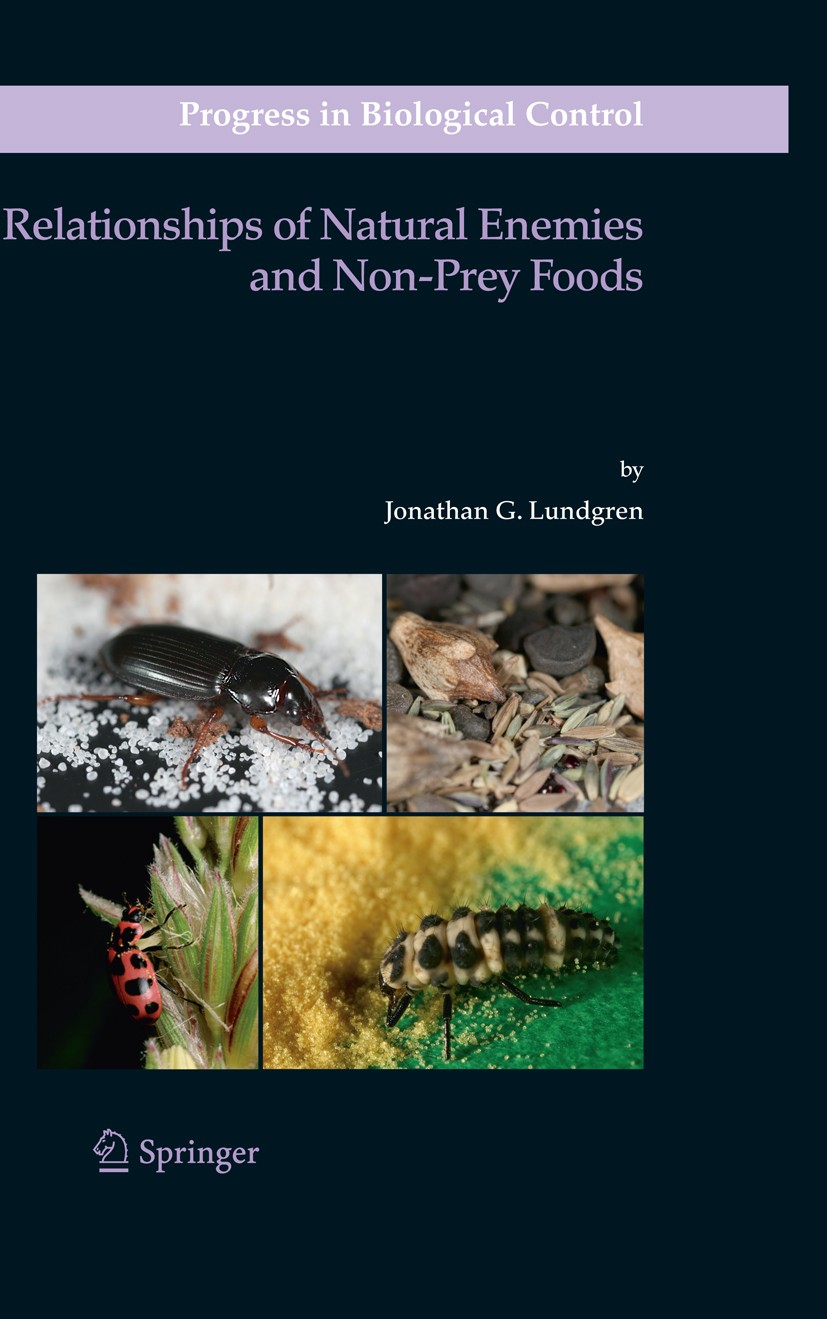| 书目名称 | Relationships of Natural Enemies and Non-prey Foods |
| 编辑 | Jonathan G. Lundgren |
| 视频video | http://file.papertrans.cn/827/826176/826176.mp4 |
| 概述 | Organized according to major classes of non-prey foods, including micro-organisms, sugar sources, pollen, and seeds.Complete compilations of granivorous carabids and pollinivorous natural enemies.Disc |
| 丛书名称 | Progress in Biological Control |
| 图书封面 |  |
| 描述 | Feeding on Non-Prey Resources by Natural Enemies Moshe Coll Reports on the consumption of non-prey food sources, particularly plant materials, by predators and parasitoids are common throughout the literature (reviewed recently by Naranjo and Gibson 1996, Coll 1998a, Coll and Guershon, 2002). Predators belonging to a variety of orders and families are known to feed on pollen and nectar, and adult parasitoids acquire nutrients from honeydew and floral and extrafloral nectar. A recent publication by Wäckers et al. (2005) discusses the p- visioning of plant resources to natural enemies from the perspective of the plant, exploring the evolutionary possibility that plants enhance their defenses by recru- ing enemies to food sources. The present volume, in contrast, presents primarily the enemies’ perspective, and as such is the first comprehensive review of the nut- tional importance of non-prey foods for insect predators and parasitoids. Although the ecological significance of feeding on non-prey foods has long been underappreciated, attempts have been made to manipulate nectar and pollen ava- ability in crop fields in order to enhance levels of biological pest control by natural enemi |
| 出版日期 | Book 2009 |
| 关键词 | Biological Control; Flora; Fungi; Nutritional ecology; Omnivory; Parasitoid; Predator; Symbiose; Model inver |
| 版次 | 1 |
| doi | https://doi.org/10.1007/978-1-4020-9235-0 |
| isbn_softcover | 978-90-481-8095-0 |
| isbn_ebook | 978-1-4020-9235-0Series ISSN 1573-5915 Series E-ISSN 2543-0076 |
| issn_series | 1573-5915 |
| copyright | Springer Science+Business Media B.V. 2009 |
 |Archiver|手机版|小黑屋|
派博传思国际
( 京公网安备110108008328)
GMT+8, 2025-11-13 06:22
|Archiver|手机版|小黑屋|
派博传思国际
( 京公网安备110108008328)
GMT+8, 2025-11-13 06:22


